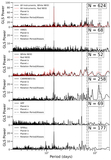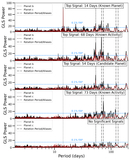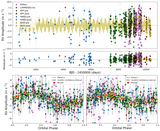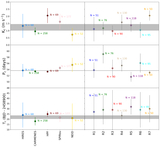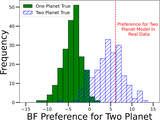Image Details
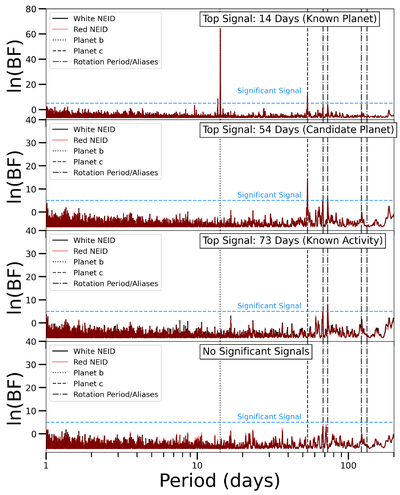
Caption: Figure 4.
A BFP created using the Agatha software package (F. Feng et al. 2017). These periodograms use an MA red-noise model to more accurately identify coherent, periodic signals. The BFP first identifies a very significant signal at 14 days, planet b. It then identifies a significant signal at 53.6 days, our purported planet c. Next, it identifies a 73 day signal which we discuss in Section 6. The final plot identifies no additional significant signals. We designate a Bayes factor of 5 as the threshold for a significant signal (R. E. Kass & A. E. Raftery 1995). Signals of interest highlighted are at 14, 54, 68, 73, 120, and 130 days.
Copyright and Terms & Conditions
© 2025. The Author(s). Published by the American Astronomical Society.



